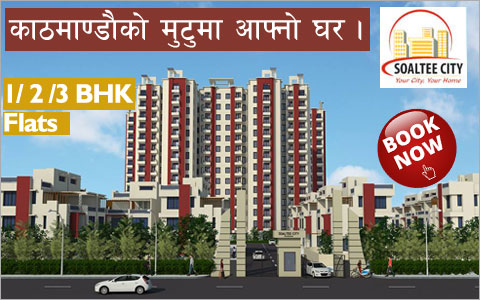National News
The Ministry of Federal Affairs has decided to move ahead with the process of removing the structures that have been in precarious state in the aftermath of the April 25 earthquake and subsequent aftershocks.
The boundary walls of houses built illegally or those which do not meet the prescribed standard and are vulnerable to collapse will be removed in all municipal areas, including Kathmandu Metropolitan City, according to MoFALD.
A MoFALD official said more than 100,000 boundary walls of private and government houses/buildings were fully or partially damaged by the earthquake in the Kathmandu Valley.
Collapse of the poorly constructed roadside boundary walls alone was responsible for the death of at least 150 persons out of 1,222 killed in the quakes in the capital.
Parts of the tall boundary walls, including that of high security Singha Durbar, Prime Minister’s Official residence, Nepal Rastra Bank and Narayanhiti Palace Museum had also collapsed due to the quakes.
The official informed that KMC and all sub-metropolitan cities and municipalities have been directed to launch the ‘Let’s Remove Tall Walls’ drive in their responsibility areas as per the May 18 ministerial-level decision to reduce their vulnerability to earthquake damage and enhance beautification of cities.
According to MoFALD, tall compound walls constructed to fence the residential, commercial, government as well as non-government buildings are not only vulnerable to disaster like earthquake but also tarnish the cityscape.
MoFALD has developed a standard for the construction of boundary walls to keep the visual pollution at bay. As per the standard, a wall of brick, stone, cement, concrete and block on the roadside should not exceed four feet in height from the road/pavement level if a building/house is yet to be constructed on a particular land.
Even if the building has already been constructed, the height of the compound wall should not exceed four feet and the owner may place wire, rod or angle railing of up to 6.7 feet on the top of the wall from the ground level in a manner that the building or house premises could be seen from outside.
MoFALD has directed the metropolis, sub-metropolis and municipalities to fully enforce the rules. The government will conduct a separate risk analysis for the standard of compound walls in the case of Dashrath Stadium, Nepal-based foreign diplomatic missions, security agencies and other highly sensitive areas, the official said.
A KMC official said the metropolis had made it mandatory for the concerned owners to get the design of a building/house approved and build the compound wall as per the prescribed standard.
source: the himalayan times,14 june 2015
- 9th Nepal Buildcon International Expo 2024
- Real Estate Expo 2023
- NRB raises housing loan limit to encourage home constructions
- Nepal Rastra Bank (NRB) Monetary Policy 2080-2081
- New Price of Land in Kathmandu Metropolitan City, Nepal
- Capital Gains Tax Rate on Real Estate Transactions in Nepal 2080-81 ( 2023/24 )
- Kathmandu metropolis implements free parking policy for commercial buildings and hospitals

![[X]](https://www.housingnepal.com/images/popup-close-button.png)










































































































































































































































































































































































































 Facebook
Facebook
 Delicious
Delicious
 Digg
Digg
 Reddit
Reddit
 Stumble Upon
Stumble Upon









